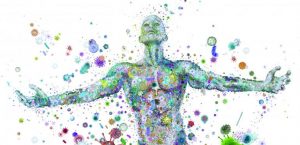The Love Fallacy

Written by Timothy E. Lewis (@TimothyELewis) — March 8, 2017
“Love has nothing to do with what you are expecting to get — only with what you are expecting to give — which is everything.”
-Katharine Hepburn
“Nothing is mysterious, no human relation. Except love.”
-Susan Sontag
“Love is composed of a single soul inhabiting two bodies.”
– Aristotle
If you hold the above as true, I suggest reconsidering. Disney classics are cute; fairy tales, nostalgic. However, maintaining their principles of love is a toxic agenda. Below we will explore the reality of the emotion, bringing rationality to that which is cast to the realm of conjecture.
The Language of Love
Some languages have words that can’t be directly translated, while others have many words for a single concept. Arabic has at least 11 different wordsfor love. Sanskrit has 500 words either being defined as or relating to love. Languages avoid stretching words past their meaning through diversity and nuance. These components limit a listener or reader’s likelihood of misinterpretation. The more accurately we convey our message, the more honest a conversation can become, fostering stronger relationships.
Perhaps the most noteworthy consideration across culture and language is that Japanese didn’t previously have a word for love like we are accustomed to in English. Instead, they relied on two separate words, “ai,” (愛) which is selfless love, like how a parent would care for their child, and “koi,” (恋) which equates to “longing and desire,” a selfish love directed towards a romantic partner. The Japanese chose to make a clear distinction between the feeling of selfless care and benevolent attachment.
Likely, this was done to avoid the obvious hypocrisy of combining the two. It wasn’t until the exposure to our conceptualization of love that the Japanese combined the Kanji for “ai” and “koi” to make a word that provided a direct translation. Without doubt, this illustrates the nature of love, specifically in the western sense, is a social construct and not a universal experience.
At the crux of the contradiction between selflessness and desire is the irrational believer: Those who say love cannot be fathomed by the human brain, that love is a mystery. This is a convenient deferral of judgement and a necessary approach to fan the zealot’s flame. Fortunately, the irrational believer’s love is not wired into human nature.
The Science of Love
Nearly a third of primates engage in monogamous relationships, a behavior that translates to marriage when applied to human tradition. The foundation of monogamy is often thought to be love, but is this really true?
Interestingly, the practice among our ape siblings started for a more plausible reason: Preventing infanticide. Among many primates, a mother is sexually unavailable until her child has been weaned. As a result, competing males will attempt to murder infants and impregnate the mother themselves. Our base inclination for monogamous relationships appears to have less to do with love, and more to do with child rearing. Naturally, this point raises questions about childless and same sex marriages. We’ll get to that later.
Touching on the earlier conundrum of love having characteristics of selflessness and desire, it turns out there’s no contradiction after all. Love is selfish. It relies on dopamine activating the reward center of the brain, causing the stimulated individual to crave its impact. Adversely, when our love is rejected, it activates the insula, the part of the brain triggered when experiencing physical pain. This is the same physiological process the body undergoes when subjected to and deprived of cocaine.
Chemically, love is a drug. The feelings of compassion and harmony associated with the emotion are produced by the body’s reaction to oxytocin, which is released when engaging in behaviors such as cuddling or experiencing an orgasm, giving context to the term “making love.”
Chemically, love is simple yet potent. This is why we have the inclination to over-analyze its properties. Traditionally, when human beings don’t understand something scientifically, we mythologize its power. In accord, there was a time when schizophrenic people were thought to be possessed by the devil, and lightning was the product of a viking with a hammer. Fortunately, as the Homo sapien has aged, its capacity for rational explanation has matured in unison.
The Perception of Love
In the previous two passages we’ve discerned four key points:
- Our ability to express love is limited to the words and nuance available in a given language.
- Love, as defined in the original three quotes is not a naturally occurring phenomenon, but rather a social construct.
- Love has nothing to do with selflessness; it is rooted in desire.
- Love is our behavioral reaction to biochemical processes.
Despite how it may seem, bringing rationality to love in no way dampens its importance. The truth is, as simple as love is biologically, it’s still vital to our mental health. Maslow’s Hierarchy of Needs prioritizes it quite highly in terms of our psychological fulfillment, right after our basic physiological and safety requirements. Our physiological needs include things like air, sleep and food, while our safety needs pertain to security from threats to our well-being (health, finances, family, etc.).

What one immediately notices is the connection between love and belonging. This promotes love as a self-serving emotion as opposed to a selfless one. To fulfill our psychological needs, it must be both given and received. See: Oxytocin.
Sternberg’s Triangular Theory of Love (psychology likes triangles) provides thoughtful, qualitative insight to the emotion’s various manifestations.

At the three points of the triangle we see liking, infatuation, and empty love. Liking (intimacy) is the kind of love one would share with a friend. Infatuation (passion) can exist without a substantial interpersonal connection, commonly referred to as “puppy love.” Empty love isn’t love at all, but commitment for the sake of commitment, perhaps in an arranged or failing marriage.
When two of the three corners combine, they form either romantic, companionate or fatuous love. Romantic love could present itself as a one-night-stand or an affair, but lacks any sense of commitment. Fatuous love is what can be termed as “love at first sight.” Fairy-tale as that may sound, it lacks the intimacy of two people that have had the time to develop a wholehearted bond. Companionate love most frequently exists in older married couples that are still committed to their relationship and share a close connection, but no longer possess passionate flare.
Together, these three iterations create consummate love. There is no exact or perfect balance of romantic, companionate and fatuous love, as needs vary by couple, but the combination of the three is considered the emotion’s ideal form. Despite this, Sternberg cautions that sustaining consummate love may be even more difficult than achieving it, stating, “without expression, even the greatest of loves can die.”
Through this theory, we gain awareness as to how love drives monogamous relationships, regardless of a couple’s sex or the bearing of children. It’s all about achieving the right balance with one’s partner.
Another valuable contribution from the Sternberg’s Triangular theory lies in its descriptive terminology. It provides us with a deeper grasp of love by appointing specific verbiage. If similar distinctions were present in our everyday language and not restricted to textbook jargon, our relationships would be more honest and our understanding of them more sophisticated.
The Verdict
Love is as complicated as we make it. By using one word to encompass so many different ideals, some of which are contradictory, we risk stripping it of meaning entirely.
The answer isn’t to fabricate abstraction, but to make our best effort to understand love. Love is a chemical reaction and a psychological process, not a social construct or a mysterious force that eludes our comprehension.
It’s not synonymous with selflessness, rather, it’s love’s selfish nature leads us to personal fulfillment and motivates us to meet the needs of our partner. The desire to be with someone is not shameful, but essential to achieving and maintaining a relationship. By knowing what love is and developing exacting methods to represent its plentiful forms, we better equip ourselves for all of its future endeavors.

The content exhibited on this site, whether visual, electronic, or in writing, shall not be republished and/or rebroadcast without the specific written permission of PubSquare Media and/or Scraptitude, NerdCraft Nation, The PubSquare and/or guest contributor or former alias thereof.


